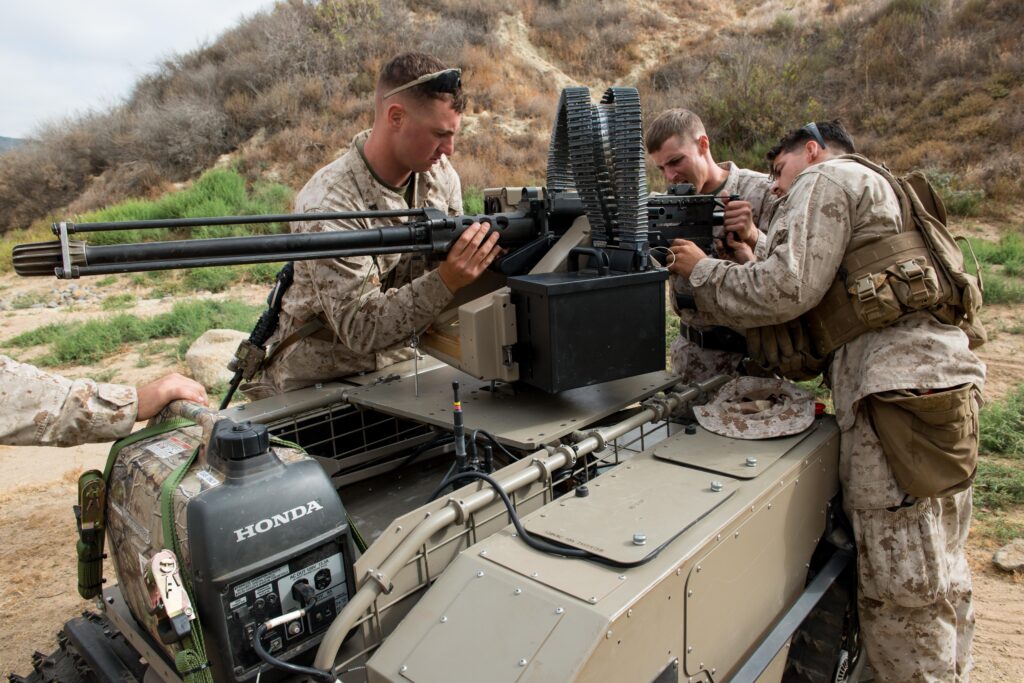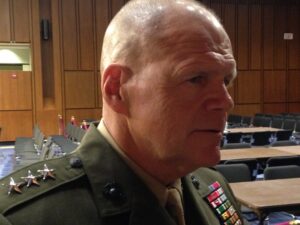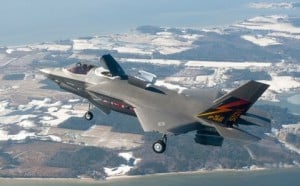2017 Forecast: Trump Loves Marines (Too Much?)
Posted on

Marines work on armed MUTT robot in MIX-16 experiment.
WASHINGTON: Donald Trump’s election is mostly good news for the Marine Corps — but there are a couple of important caveats. Both his campaign promise to increase Marine combat battalions by 50 percent and his public lambasting of the F-35 Joint Strike Fighter could cause problems for Marine Corps leaders as they struggle to explain their strategy to the enthusiastic but inexperienced Trump.
[We rolled out our crystal balls for our 2017 forecast. Click to read the whole series.]
Most politicians love Marines, and Trump is no exception, nominating two retired Marine generals to his cabinet. But the Marines are not only the most politically popular service, they’re also the smallest, and an overly enthusiastic embrace can cause almost as many problems as outright criticism.

General Robert Neller
Consider Trump’s pledge to grow the Marine Corps from 24 active-duty rifle battalions to 36, and from two tank battalions to three. The figures come straight from Heritage Foundation analyst Dakota Wood — a retired Marine officer himself — who proposed similar steep increases in all the services, based on the forces required to wage past wars. Specifically, Wood & co. looked at average force levels across Korea, Vietnam, the 1991 Gulf War, and the 2003 invasion of Iraq; doubled that average to allow for two “major theater wars” at once; and then added another 20 percent to account for units in training, refit, or otherwise unavailable.
But when you ask Marine Commandant Robert Neller about how best to grow the Corps, he’s not looking back at the requirements of past wars. He’s focused on the new needs of the information age, particularly cyber and electronic warfare. If Trump wants to build 13 new ground combat battalions, the Marines will of course obey. But if Gen. Neller instead could choose what to do with a few thousand more Marines, he’d rather add them to understaffed technical specialties than to rifle squads and tank crews.

Marine F-35B in hover mode.
The Marine Corps’ aviation wing has even more to worry about, because Trump is publicly slamming the fighter on which they’ve bet their future, the F-35. While the Air Force is buying the most Joint Strike Fighters, the Marine Corps is buying the most complicated and expensive variant, the F-35B, and it’s sending it on real-world missions before either the Air Force or Navy variants go.
What makes the F-35B complex? It sacrifices fuel capacity for, effectively, an extra engine that lets it land and take off vertically, without a runway. That “jump jet” capacity is crucial for the Marine Corps, which operates off amphibious ships whose flight decks are too short for a conventional take-off or landing. The Marines also want to operate future fighters out of short, austere airstrips on land. But the history of the notoriously crash-prone AV-8 Harrier, which the F-35B will replace, suggests this form of flight is particularly tricky. One high-profile accident, let alone a death, would bring intense scrutiny to the F-35B — and Trump is already skeptical of the entire F-35 program.
Overall, the odds are the Marines will do well under a Trump administration. Just don’t be too surprised if the love affair turns sour.
Subscribe to our newsletter
Promotions, new products and sales. Directly to your inbox.
